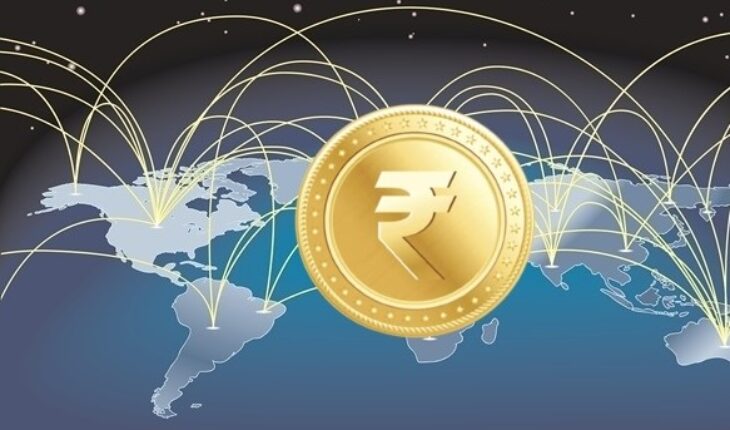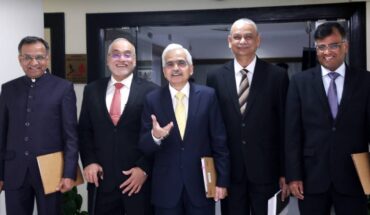
The Indian Rupee’s ambitions to become a recognised international currency are a topic of much debate at the moment. This may appear odd at first because most common Indians do not believe that the Indian Rupee has developed to the point where it can take the place of the dollar as the world’s reserve currency. There are also rumours that if the Indian Rupee becomes a recognised worldwide currency, India will economically gain significantly and will be able to advance quickly among wealthy nations in the future. In reality, the beginning of this matter was initiated in an official discussion last year by the Reserve Bank of India, stating that all countries in the world should have the right to use their preferred currency in international transactions. These rumours then received further traction as India brought up the topic of financial regionalization for political centralization during the BRICS Summit, indicating that the Modi government is potentially thinking about using the Rupee as a commercial incentive in all of India’s international transactions. India supported this idea by promoting mutual cooperation with other small nations, including Sri Lanka, and made the Indian Rupee the base for all exchanges. In this context, the Reserve Bank of India also began offering its citizens a special banking service in which they could conduct international transactions in Indian Rupees rather than having to convert their money into dollars through a special banking account called the Vostro Account.
Is the dollar’s dominance over the world about to start to wane? The analysis reveals a number of data that lend credence to the notion that the dollar’s global sway is now beginning to wane in a number of international locations. The American dollar accounted for more than 70% of the world’s currency reserves in 1999, but by 2022, that percentage had dropped to 59%, according to a new report from the International Monetary Fund (IMF). International diplomacy contributes to this decline, but the United States’ economic policies also unfairly impose its dominance on other nations. The ongoing conflict between Russia and Ukraine under the framework of international diplomacy is an example where Russia and China, together, have strongly positioned the Chinese currency against the American dollar on the international stage. If we discuss some of America’s flawed economic policies, after the COVID-19 pandemic, the Federal Reserve made multiple changes to its interest rate policies in an attempt to control domestic inflation. As a result, the dollar became significantly stronger on the international level, causing major economic setbacks for all major developed countries, including leading economies like India, as their currencies continually weakened against the dollar on the international stage. For example, before the COVID-19 pandemic, the Indian Rupee was around 70 rupees to the dollar in December 2019, but it reached a level of 83 rupees in December 2022. This means that the Indian Rupee weakened against the dollar by about 20% in just three years. As a result, India’s imports became increasingly expensive, leading to high inflation in the domestic market. The rising prices of crude oil also played a significant role in all of these factors.
The purchase of gold by all the major nations on the international market is currently considered as a basis for reducing the pressure the dollar exerts on the world economy. China alone purchased 58 metric tonnes of gold in the first three months of 2023, which is why gold accumulation in China is at an all-time high right now. Russia, on the other hand, is the world’s second-largest producer of gold and has purchased 32 metric tonnes of it in the past quarter despite being involved in a conflict with Ukraine. Continual large-scale gold purchases are also being made by nations like Singapore, Turkey, and Kazakhstan. Statistics are also telling that after the year 2010, today the accumulation of gold in the whole world is at its maximum level. During that time, the maximum purchase of gold had suddenly increased in the world due to the negative impact of the American recession of 2007. The reason was that due to the American recession, the unavailability of the American dollar or the lack of foreign exchange reserves, countries did not have to see the inability to pay for their imports and gold could be used as a substitute for the dollar. Perhaps this thinking is once again making its place, these days,on the global stage as the dollar has artificially become very strong due to the interest policies of the American Fed. This has greatly affected the currencies of all countries, due to which all countries may use gold as a substitute for payment instead of dollars in future. Although India has not shown such a rush in buying gold and has bought only 10 metric tonnes of gold per quarter on an average, but today India has 8 percent gold in its total foreign exchange reserves.
The topic of India being the third-largest economic superpower in the globe in the coming years was prominently mentioned in Prime Minister Modi’s speech to the joint session of the American Congress a few days ago. India’s GDP is projected to be worth approximately $6 trillion by 2028, according to the IMF’s most recent report. In the midst of all of this, it’s crucial to recognise that India has significant trade deficit issues in foreign exchange even though its economy is currently growing extremely quickly. The primary obstacle here is paying for imports in American dollars, which is exceedingly expensive when compared to the Indian rupee. Due to this aspect, during the war between Russia and Ukraine in the past, when India bought crude oil from Russia instead of buying it from Gulf countries and made an agreement to do mutual exchange with Russia in rupees, then it used rupee as international currency. India had a diplomatic success towards setting up. However, it cannot be taken as a complete success as of now because Russia wants to recover the benefits of paying in dollars by selling more crude oil to India. Therefore, only the time to come will tell whether payment of excess purchase of crude oil will give benefit in rupees or not. But if India’s agreements with some industrialised nations are for the payment of foreign exchange in rupees, then it will undoubtedly be a tremendous success for India’s economic development and have a wide range of positive consequences on the Indian economy and society in the future.
Dr. P.S. Vohra , Academician, Financial Thinker & Newspaper Columnist , Views are personal





